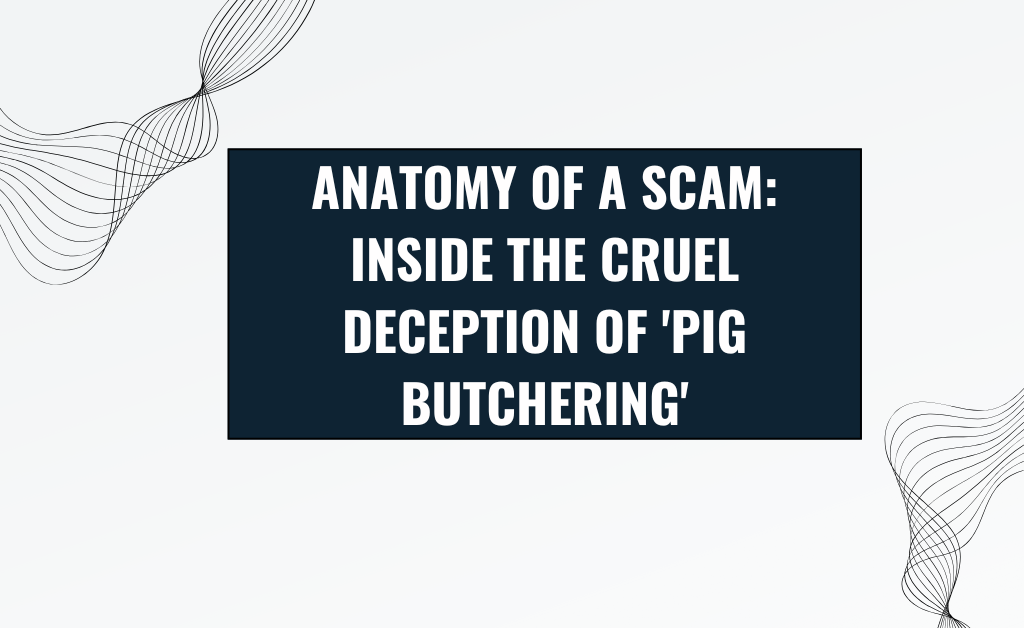In the dark landscape of online fraud, few schemes are as methodical, patient, and psychologically cruel as the one known by its grim name: “Pig Butchering” (a translation of the Chinese phrase “Shā Zhū Pán”). This is not a quick smash-and-grab fraud; it is a long-con, an elaborate form of financial and emotional slaughter where scammers invest weeks, or even months, fattening up a victim with trust and affection before taking everything.
Understanding the anatomy of this scam is one of the most effective ways to recognize its red flags. It is a terrifyingly effective fusion of a romance scam and an investment scam, relying on deep psychological manipulation to bypass even the most cautious individual’s defenses. By seeing how the scheme is constructed, you can learn to spot the trap long before it is sprung.
Phase 1: The Bait – A Seemingly Innocent Introduction
The scam almost never begins with a direct financial proposition. It starts with a simple, disarming message from an unknown number or a new contact on a social media or dating app. Common opening lines include:
- “Hi, is this Jessica? This is David, we connected on LinkedIn.”
- A seemingly accidental “wrong number” text, like: “Hey, I had a great time last night. I’m looking forward to our trip to Napa.”
- A new friend request or message on Instagram or Facebook from an attractive, well-dressed individual whose profile suggests wealth and success.
When the target replies that they have the wrong person, the scammer apologizes profusely but uses the opening to start a friendly conversation. They are charming, polite, and non-threatening. Their goal is simply to establish a connection.
Phase 2: Fattening the Pig – The Cultivation of Trust
This is the longest and most critical phase of the scam. Over weeks or months, the scammer builds a deep, often romantic, relationship with the target. This is the “fattening” process.
- Daily Communication: They will text throughout the day, asking about your work, your family, and your dreams. They share details about their own (fabricated) life, often claiming to be a successful entrepreneur living abroad. They will send photos (stolen from other people’s profiles) and build a rich, believable persona.
- Grooming and Affection: They shower the victim with compliments and affection, creating a powerful emotional bond. They position themselves as a trusted confidante and potential life partner. Crucially, they will almost never ask for money during this phase. Any mention of finances is subtle and woven into conversations about success and lifestyle.
- The Financial Tease: Eventually, they will casually mention their success in investing, particularly in cryptocurrency. They might say something like, “Wow, I just had a great day on the market,” or share a screenshot of a trading account showing huge profits. They are not offering to help you yet; they are planting a seed and building their credibility as a financial expert.
Phase 3: The Setup – Introducing the “Investment”
Once a deep level of trust is established, the scammer moves to the next phase. They will suggest that the victim should also try investing.
- The “Special” Platform: They will guide the victim to a fraudulent trading platform or mobile app. These websites and apps are incredibly sophisticated, appearing perfectly legitimate with real-time charts, account dashboards, and customer service chats. However, the entire platform is a sham controlled by the scammer.
- Starting Small: They will encourage the victim to start with a small, low-risk investment (e.g., $1,000). To build confidence, this initial investment will show a quick and impressive profit on the fake platform’s dashboard. The scammer will even allow the victim to successfully withdraw this small profit back to their bank account. This single act is devastatingly effective, as it seems to prove that the platform is legitimate and trustworthy.
Phase 4: The Slaughter – Escalation and Theft
Convinced by the initial success, the victim is now ready for the final stage. The scammer will encourage them to invest much larger sums of money to take advantage of a “once-in-a-lifetime” market opportunity. Victims might drain their savings, take out loans, or even borrow from their retirement accounts to invest sums of tens or hundreds of thousands of dollars.
The moment the large sum is deposited, the trap springs. The victim will suddenly find they are unable to withdraw their funds. The scammer and the fake platform’s “customer service” will invent a series of reasons: a large tax must be paid, a compliance fee is required, or the account is frozen for a security check. Each new demand is just a final attempt to milk more money from the victim.
Eventually, the charming confidante disappears. The website goes offline. The scammer, and all the invested money, are gone forever. The victim is left with not only a devastating financial loss but also the profound emotional trauma of a deeply personal betrayal. This cruel, methodical process is why Pig Butchering is one of the most dangerous scams online today.


